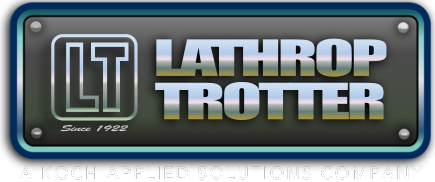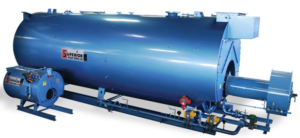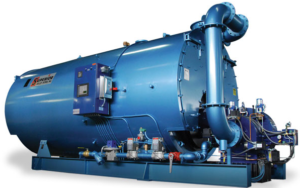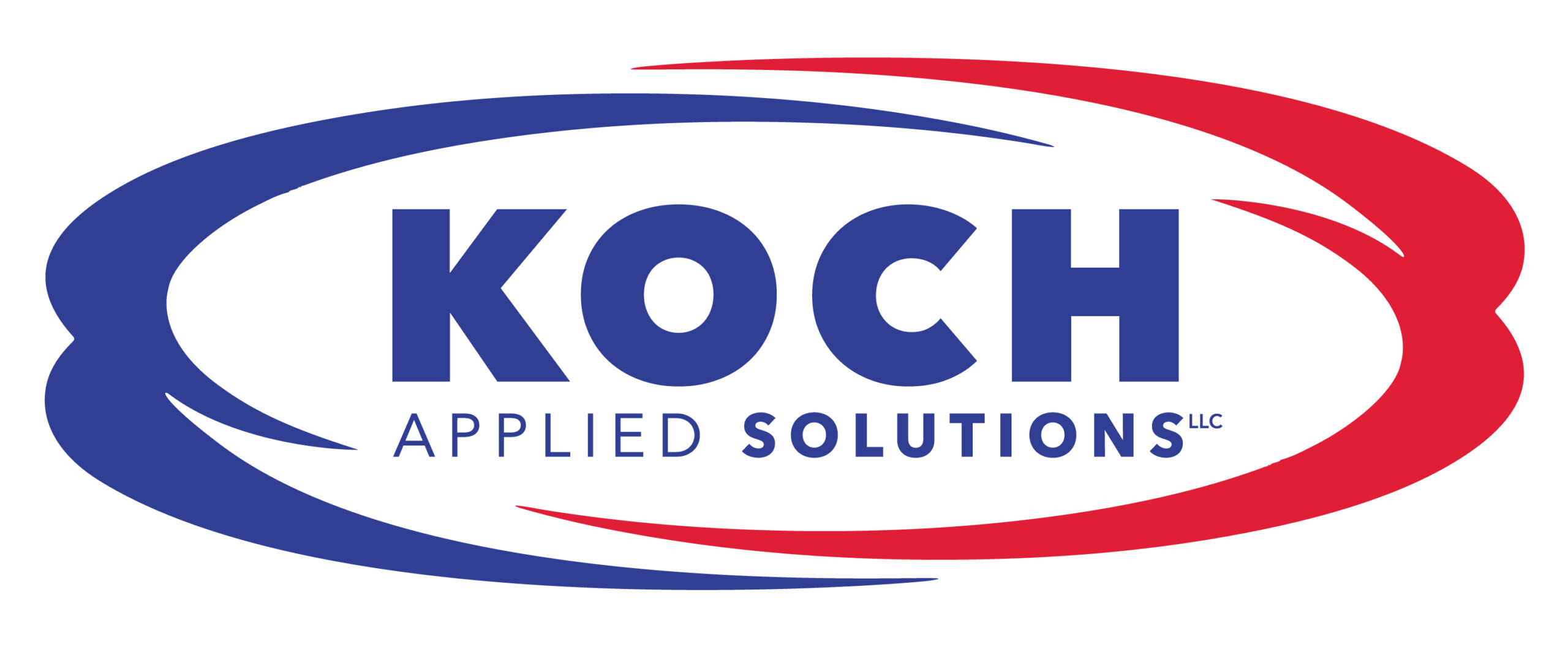There are two primary firetube boiler designs: “wet back” and “dry back”. The basic difference between a wetback boiler and a dry back boiler is in the rear wall design. The wet back boiler has a rear wall that is surrounded by water, while the rear wall of a dry back boiler is lined with refractory. Since the heat from combustion is used for heating water, the wet back boiler design can be considered more efficient than the dry back boiler.
Wet Back and Dry Back Boilers Characteristics Compared
| Wet Back Boilers | Dry Back Boilers | |
|---|---|---|
| Cost/Expense | Higher upfront cost; long term fuel cost savings, cost of ownership, and minimal downtime | Lower upfront cost; simplistic design that is easier to service |
| Doors | Lift off or split-hinged doors require no cool-down period; can be opened immediately | Heavy, vessel-sized rear door requires space to open and cool-down period prior to opening |
| Footprint | Door design reduces floor space requirements | Larger floor space requirement for vessel-sized door functioning |
| Maintenance | No costly refractory to maintain; internal pressure vessel maintenance can be more complex | Regular inspection and periodic replacement of refractory required; simpler design |
| Rear Turnaround | Improves efficiency due to water absorbing burner heat | Refractory wall reflects burner heat causing exterior radiation losses |
| Sealing Kits | Fewer seals; non-proprietary design for inexpensive and easy installation | Requires multiple proprietary sealing kits for every inspection and vessel service |
| Tube Sheets | Separate tube sheets can expand and contract independently in response to temperature differentials between passes | Common tube sheet subject to extreme thermal stress in response to temperature differentials |
Lathrop Trotter has extensive experience in developing both wet back boiler and dry back boiler applications. Our team can assist you in determining which boiler type will best serve your process, facility, and budget. Contact us to discuss your project!



